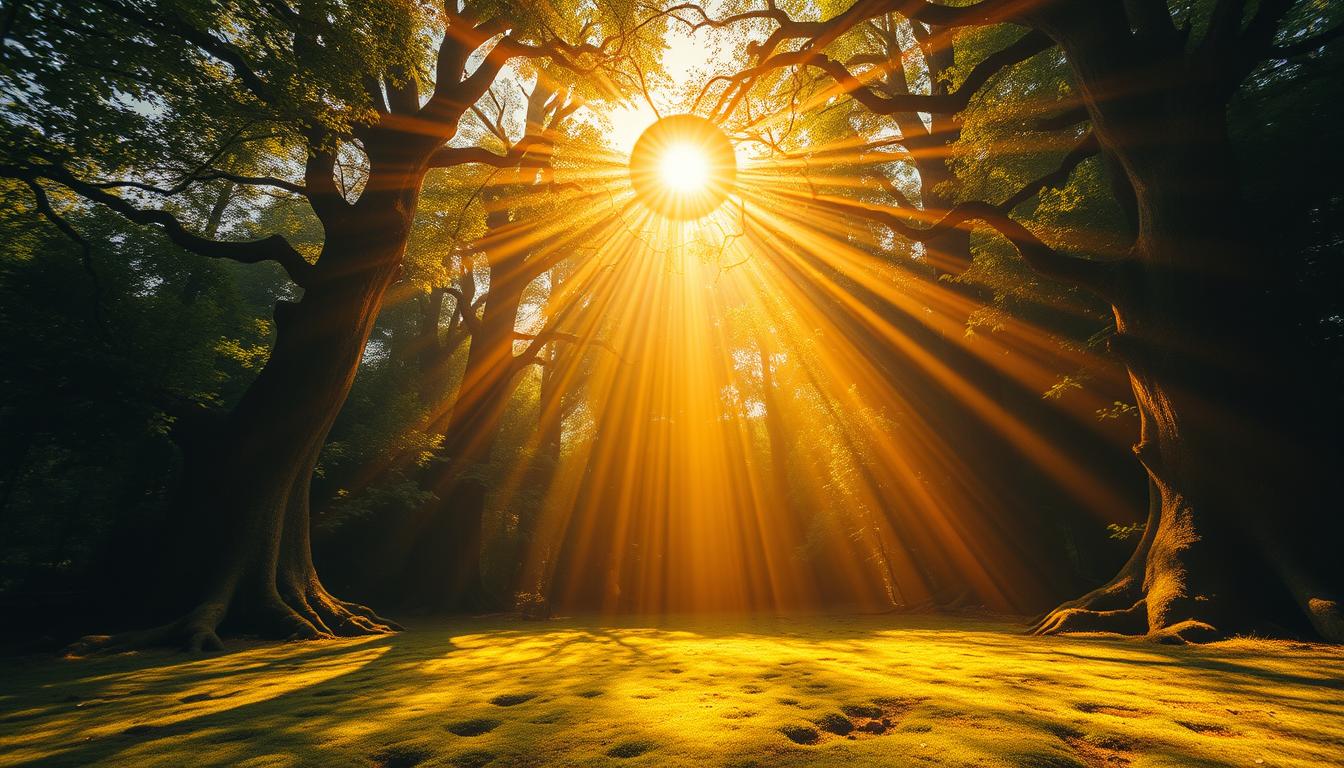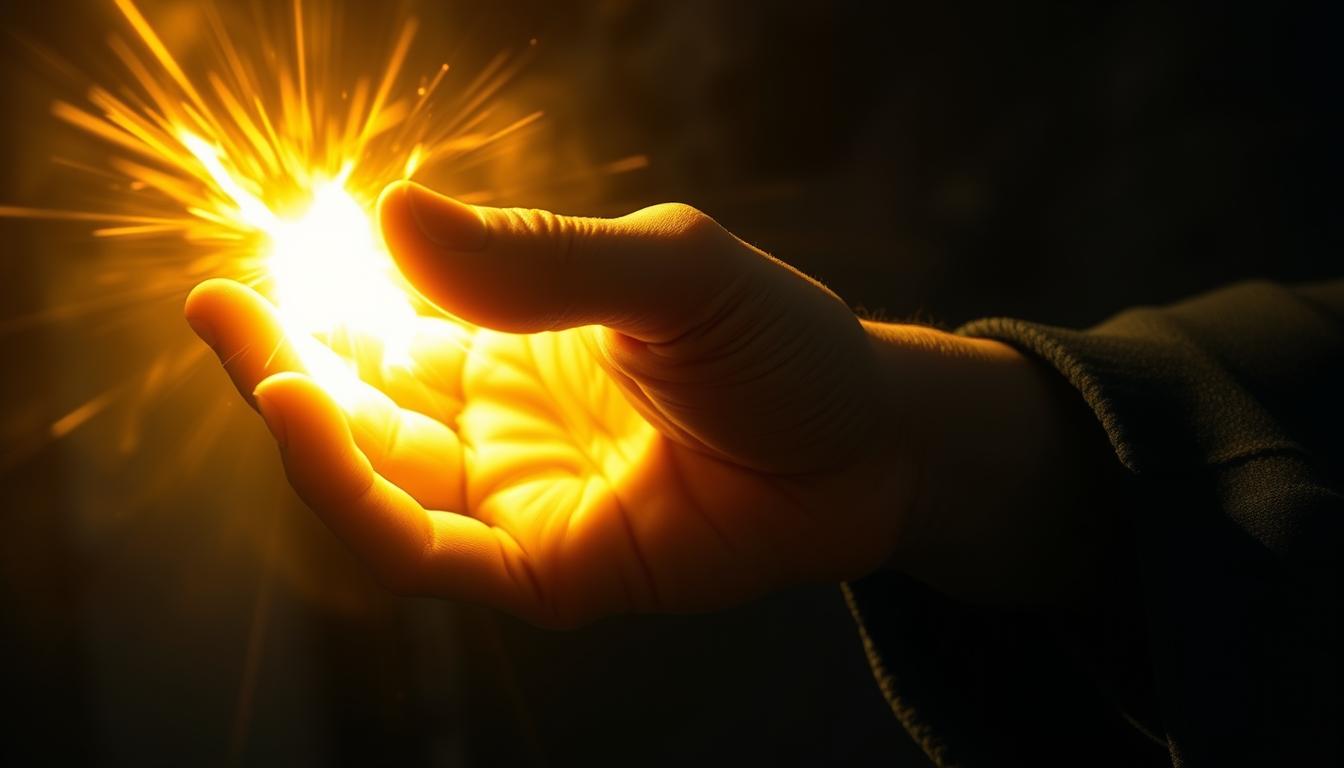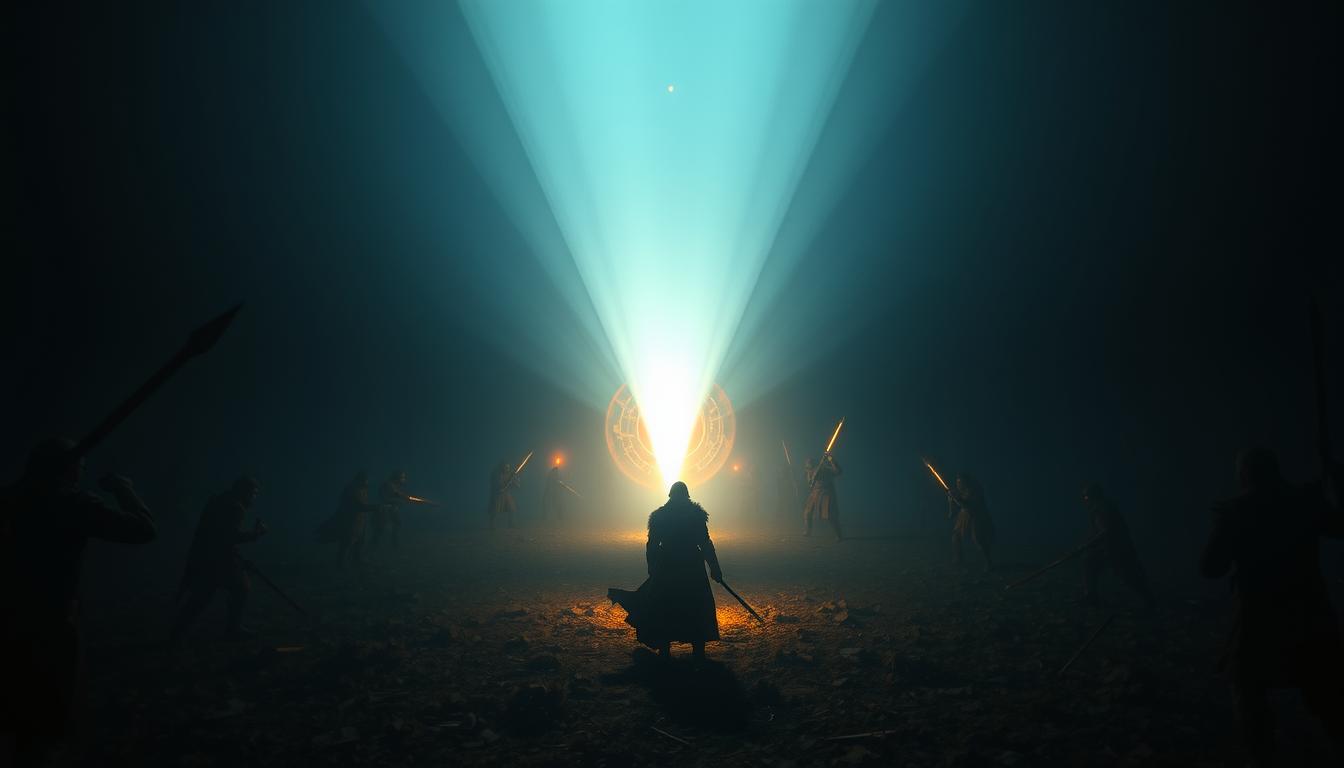Daylight Spell 5e: A Comprehensive Guide
Ever wondered how a single evocation can turn the tide in dark dungeons or shadowy battles? The Daylight Spell in Dungeons & Dragons 5e isn’t just a glorified torch—it’s a tactical masterpiece. As a 3rd-level evocation, it creates a 60-foot radius of bright light, pushing back darkness and even countering lower-level magical shadows.

I’ve seen players underestimate this spell, treating it as a simple utility. But when used right, it’s a game-changer. Whether you’re a DM crafting encounters or a player navigating pitch-black caves, understanding its mechanics—like its 1-hour duration or mobility when cast on objects—can make all the difference.
In this guide, I’ll break down its strengths, quirks, and surprising uses. From dispelling enemy advantages to lighting up entire battlefields, the Daylight Spell deserves a closer look. Let’s dive in.
Key Takeaways
- Creates bright light in a 60-foot radius and dim light beyond.
- Counters darkness spells of 3rd level or lower.
- Lasts 1 hour and can be moved if cast on an object.
- More versatile than lower-level light sources like Light or Dancing Lights.
- Ideal for tactical play and exploration.
What Is the Daylight Spell 5e?
Not all light is created equal—this one comes with a 60-foot radius punch. When cast, it creates a sphere of bright light that sheds illumination like a miniature sun, plus an additional 60 feet of dim light. But here’s the kicker: it’s not actual sunlight, so don’t expect vampires to burst into flames.
Spell Overview and Basic Mechanics
The effect centers on a point or object you choose. If you pick an object, the light moves with it—handy for lanterns or arrows. Cover the object with something opaque, like a helmet, and the glow vanishes until uncovered. It’s like having a light switch for your magic.
Where this gets tactical is in its spell area overlaps. If your bright light touches a Darkness spell (2nd-level or lower), the shadows dissolve. Think of it as a flashlight overpowering a candle.
Bright Light vs. Dim Light: What’s the Difference?
Light levels matter in D&D. Here’s the breakdown:
| Light Type | Visibility | Effect on Gameplay |
| Bright Light | Clear as day | No penalties to Perception |
| Dim Light | Shadowy, hazy | Disadvantage on sight-based checks |
Pro tip: Cast it on a pebble and drop it down a chasm. The dim light extension might reveal hidden ledges or traps below. Just remember—it won’t hurt creatures sensitive to sunlight, despite the name.
How to Cast Daylight in D&D 5e
Mastering the mechanics of this evocation starts with understanding its core casting principles. It’s not just about creating light—it’s about precision in execution.

Casting Time and Components
You’ll need a single action to activate it, faster than lighting a torch mid-combat. The magic requires verbal incantations and somatic gestures—no material components. I’ve seen bards whisper the words while drawing swords, blending spellcasting with battle prep.
Range, Duration, and Area of Effect
With a 60-foot range, you can illuminate distant corners or hovering enemies. Once cast, it lasts a full hour, outlasting most dungeon crawls. Compare that to weaker alternatives:
| Feature | This Evocation | Basic Torch |
| Duration | 60 minutes | 1 hour (but requires hand) |
| Bright Light | 60-foot radius | 20 feet |
| Mobility | Yes (if cast on object) | Only if held |
Targeting Objects vs. Points in Space
Here’s where strategy kicks in. Choose between:
- Unoccupied space: Creates a fixed light source—great for camp setups.
- Objects: Arrows, coins, or shields become mobile beacons. Just remember: the target can’t be worn or carried by enemies (sorry, no glowing armor pranks).
Pro tip: Cast it on a dagger and throw it. The 60-foot radius moves with the blade, scouting ahead like a magical flare.
Daylight Spell Interactions and Counters
Light isn’t just about vision—it’s about control. When magic meets shadows, the battlefield becomes a chessboard. Here’s how this evocation clashes with darkness and what can stop it.
Dispelling Darkness Spells
This effect cancels darkness created by spells of 3rd-level or lower. Imagine a Darkness spell swallowing a room—your light wipes it clean. But there’s a catch: higher-level shadows like Maddening Darkness laugh it off.
Limitations Against Higher-Level Darkness
Not all shadows are equal. A 4th-level Darkness spell? Untouched. I’ve seen DMs forget this, letting players “win” light wars unfairly. Pro tip: Track spell levels when area overlaps happen.
Blocking Daylight with Opaque Objects
Cover the light source, and the glow vanishes. A bowl or helm works—no magic needed. Enemies might use total cover or tight caves to block light. In Curse of Strahd, I hid a glowing coin under a rag to ambush vampires.
- Environmental counters: Natural darkness (no spell) ignores the effect.
- Action economy: Covering/uncovering mid-fight costs an action.
- Dragon vs. kobold: Smart foes adapt; weak ones panic.
Strategic Uses for the Daylight Spell
Light isn’t just utility—it’s a tactical weapon in the right hands. Whether you’re ambushing drow or deciphering ancient runes, this effect turns darkness into your playground. Here’s how to wield it like a pro.
Combat Applications: Illuminating the Battlefield
Darkvision won’t save your enemies here. A 60-foot sphere of bright light cancels their advantage, forcing them into the open. I’ve watched goblins fumble attacks when their shadows vanished mid-swing.

Pair it with area control spells like Moonbeam for layered tactics. Need proof? Check this comparison:
| Tactic | Without Light | With Light |
| Enemy Stealth | Advantage on hide checks | Disadvantage (exposed) |
| Party Accuracy | Normal rolls | No Perception penalties |
Exploration and Puzzle-Solving with Light
Dungeons love light-based traps. Cast this on a mirror to redirect beams or reveal hidden glyphs. One tomb required a 60-foot radius to activate pressure plates—torches just didn’t cut it.
Underwater? Perfect. Shipwrecks glow without risky flames. Drop a glowing coin down a well to scout depth with the additional 60 feet of dim light.
Role-Playing Opportunities
Flavor matters. A cleric might consecrate a shrine with radiant light, while aarakocra reenact sunset rituals. I once cast it on a relic during negotiations—suddenly, the cultists took us seriously.
Economy hack: Skip torches. A single casting lights a dungeon crawl, saving gold for better gear. Just don’t tell the tavern’s lantern salesman.
Limitations and Drawbacks of Daylight
Every tool has its limits—even magic that mimics the sun. While this evocation shines in dark dungeons, it’s not a cure-all. Understanding its limitations helps avoid wasted spell slots and tactical blunders.
When Daylight Falls Short
The name tricks many players. Despite its brilliance, it doesn’t count as actual sunlight. Vampires won’t burn, and shadow demons won’t flinch. I’ve seen parties waste turns trying to repel undead, only to realize their mistake mid-combat.
Higher-level darkness spells laugh at this effect. A 4th-level Darkness? Untouched. Even in normal shadows, some foes adapt:
- Blind enemies like grimlocks ignore light entirely
- Well-lit areas make the duration redundant
- Drow might carry light-absorbing gear as counters
Spell Slot Efficiency: Is It Worth It?
That 3rd-level slot could be a Fireball or Revivify. Ask yourself:
- Does your party lack darkvision? Humans need it more than dwarves.
- Are you exploring or fighting? Torches work fine for casual dungeons.
- Will you face magical darkness? Otherwise, Light suffices.
DMs, take note: If players overuse it, design encounters with light-immune foes or cramped tunnels. Balance is key.
Conclusion
This evocation packs a punch when used right. It’s not just about brightening a room—it’s about controlling the battlefield, solving puzzles, and adding flair to role-play. While niche, its ability to cancel magical darkness and illuminate vast areas makes it a tactical gem.
Try casting it on movable objects for creative scouting or area denial. Every table rules light interactions differently, so check with your DM. Need plot hooks? Imagine a villain stealing the party’s glowing relic mid-fight.
Got wild stories using this effect? Share them! For high-level play, pair it with terrain-altering spells for devastating combos. Now go light up your next adventure—strategically.